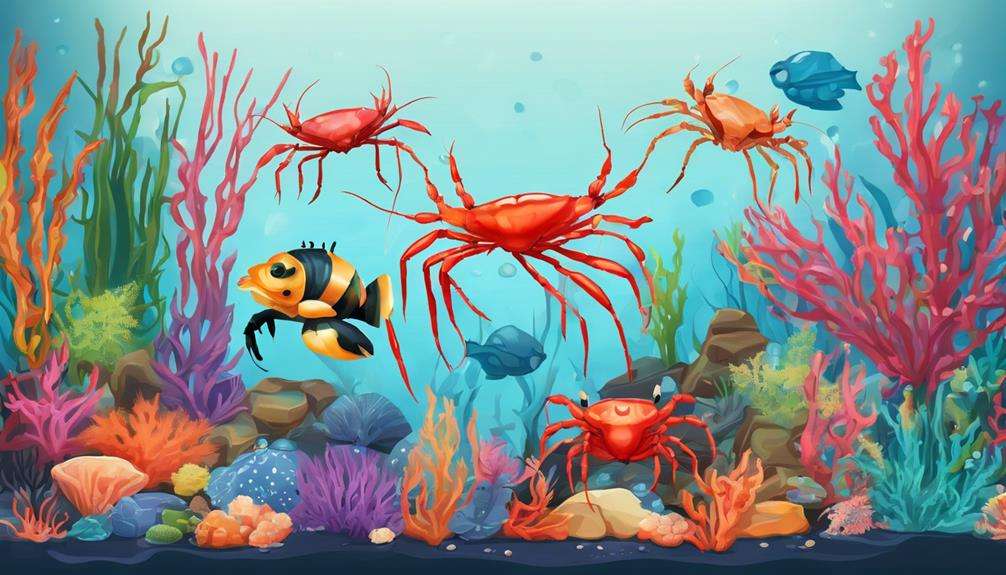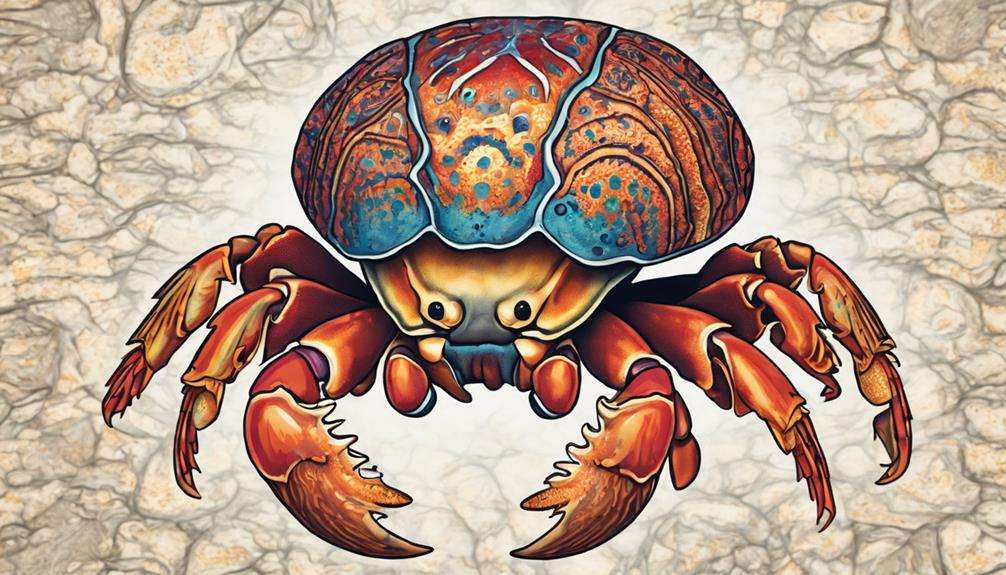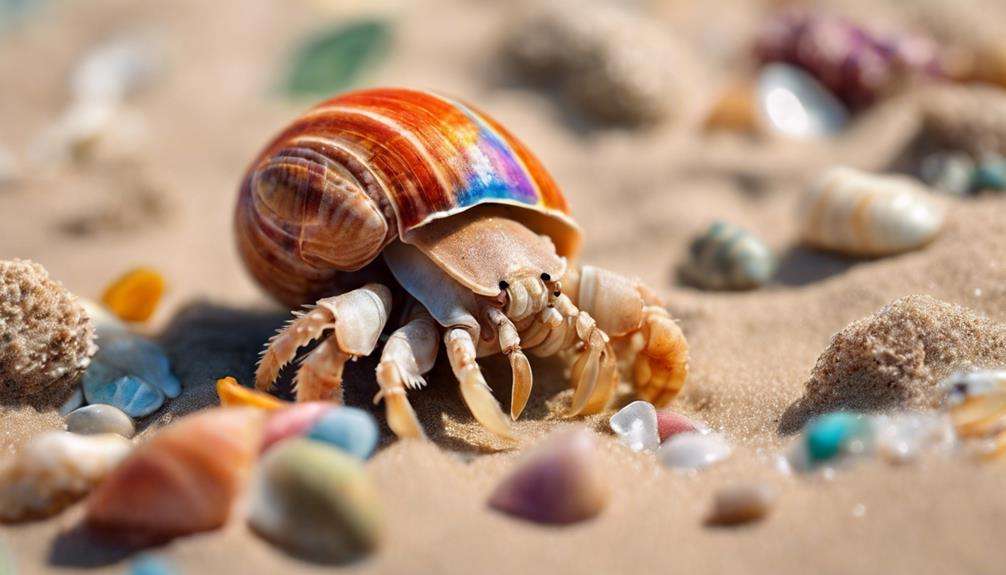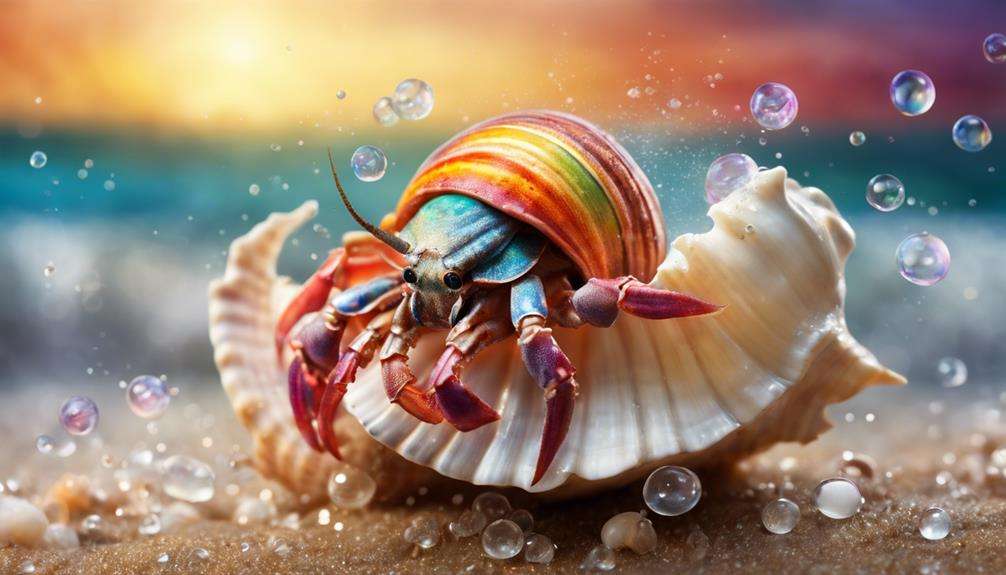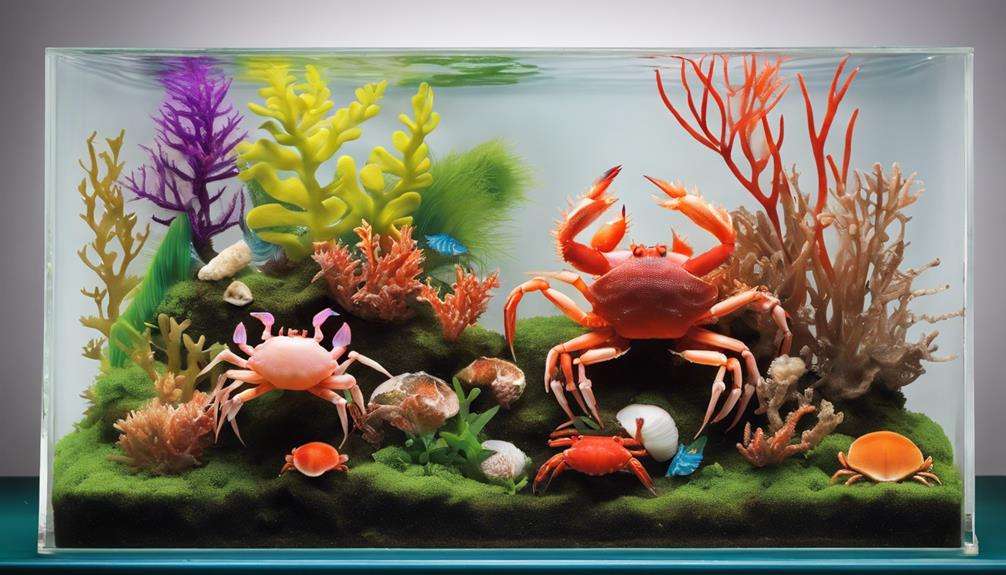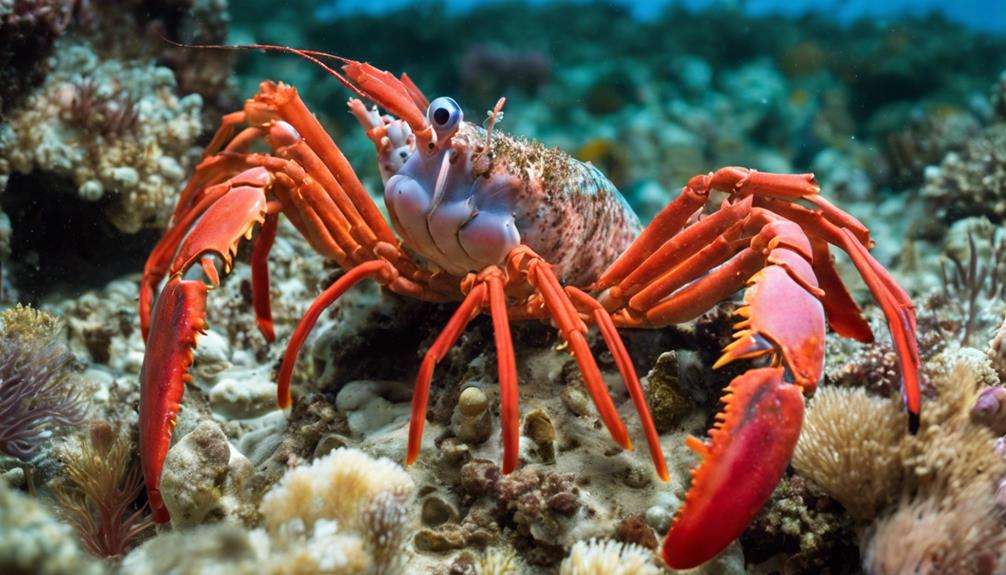Imagine observing a miniature underwater world right in your living room, where tiny creatures with intricate shells scuttle about, creating a mesmerizing spectacle. The allure of caring for distinctive crustaceans goes beyond aesthetics; it rests in the intricate balance of their unique needs and behaviors that captivate curious minds.
From their elaborate molting process to their quirky personalities, these special pets offer a rewarding experience that goes beyond the surface. Their care demands attention to detail and a deep understanding of their environment, making them a distinctive choice for those seeking a truly enriching pet ownership experience.
Key Takeaways
- Unique features and housing needs cater to distinctive crustaceans' specific requirements.
- Nutritional balance and health maintenance are crucial for exotic crustaceans' well-being.
- Proper handling and interaction guidelines ensure the care of uncommon crustaceans.
- Temperature, habitat, and proactive care are essential for the health of special crustaceans.
Unique Features of Distinctive Crustaceans
Distinctive crustaceans possess remarkable anatomical characteristics, including jointed limbs, claws, and eyes situated on stalks, setting them apart from other creatures in the animal kingdom. Among these fascinating creatures are hermit crabs, known for their unique lifestyle. Hermit crabs, contrary to their name, aren't true crabs but belong to the Paguroidea superfamily. Their defining feature is their habit of seeking shelter in empty shells of other animals, such as snail shells, to protect their soft abdomens. This behavior showcases their remarkable adaptability to different environments.
Hermit crabs, like other crustaceans, are omnivores, displaying a varied diet that includes both plant matter and small animals. Their diet flexibility makes them relatively easy to feed and care for, requiring a diet rich in calcium for their exoskeletons. Additionally, adult hermit crabs can range in size from 2-6 inches, offering a diverse selection for pet enthusiasts. Understanding these unique features of hermit crabs can enhance the enjoyment and companionship they bring as pets.
Proper Housing for Rare Crustaceans
Rare crustaceans, like vampire crabs, necessitate specialized tank setups tailored to their specific water parameters and habitat requirements. When creating a habitat for rare crustaceans, such as Land Hermit Crabs, it's crucial to consider the following:
- Appropriate Substrate: Providing a substrate that mimics their natural environment is essential for rare crustaceans' well-being. This substrate should allow for burrowing and provide stability for their molting process.
- Hiding Spots: Including hiding spots in the tank is vital for rare crustaceans to feel secure and reduce stress levels. These hiding spots can be created using rocks, driftwood, or artificial caves.
- Land Areas: Some rare crustaceans, like vampire crabs, require land areas within their enclosure to prevent drowning. These land areas should have easy access from the water and provide a dry area for the crustaceans to rest and molt safely.
Ensuring that the tank setup meets these requirements will help create a suitable environment for rare crustaceans to thrive.
Nutritional Needs of Exotic Crustaceans
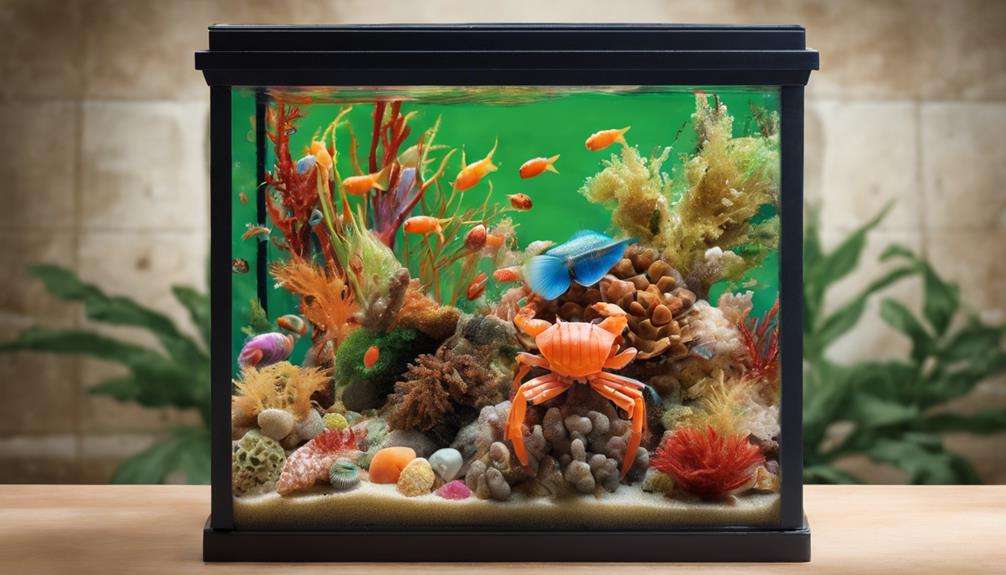
Exotic crustaceans have specific nutritional requirements that are crucial for their growth and overall health. Crabs, as a type of exotic crustacean, need a balanced diet rich in protein, calcium, and fiber to thrive. Providing them with sources of calcium, such as cuttlebone or crushed eggshells, is essential for supporting their molting process and shell formation. Some crab species may also require specific dietary components like seaweed or algae to mimic their natural diet in the wild accurately.
To ensure optimal health, offer a varied diet consisting of fresh fruits, vegetables, and commercial crustacean pellets. These foods help meet the diverse nutritional needs of crabs and promote their overall well-being. Additionally, supplementing their diet with essential vitamins and minerals like iodine and magnesium can prevent deficiencies and support the proper functioning of their biological processes. By meeting these nutritional requirements, you can help your exotic crustacean, such as crabs, lead a healthy and fulfilling life in captivity.
Health and Wellness of Special Crustaceans
Maintaining the health and wellness of special crustaceans, like hermit crabs, requires careful attention to their diet and habitat conditions. These species of hermit crabs have specific needs that must be met to ensure their well-being. Here are key points to consider:
- Balanced Diet: Special crustaceans, such as hermit crabs, need a properly balanced diet to stay healthy and active. Providing a variety of foods like fresh fruits, vegetables, and high-quality commercial crab foods is vital for their nutrition.
- Habitat Conditions: Monitoring the temperature and humidity levels in the habitat is crucial for the overall health of hermit crabs. Maintaining the right conditions mimicking their natural environment is essential.
- Shell Maintenance: Regular shell inspections and offering suitable shell options are crucial for the comfort and growth of hermit crabs. Ensuring they've access to appropriately sized and shaped shells promotes their well-being and prevents shell-related issues.
Taking these factors into account will help you provide the best care for your special crustacean pets.
Handling and Interaction With Uncommon Crustaceans
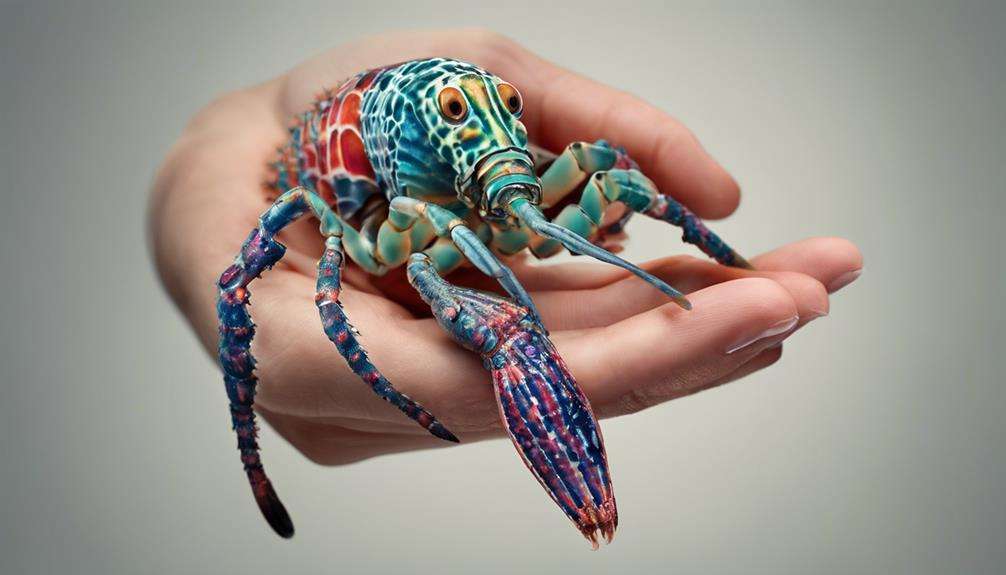
To ensure the well-being of uncommon crustaceans in your care, it's important to understand the proper techniques for handling and interacting with these unique pets. Marine crustaceans, such as vampire crabs and Thai micro crabs, are sensitive creatures that require gentle handling to prevent stress and injury. When interacting with these special pets, it's crucial to create a calm and quiet environment to avoid startling them.
Additionally, providing hiding spots and obstacles in their habitat can encourage natural behaviors and enhance interaction. For example, rare crustaceans like pom pom crabs and porcelain crabs often exhibit fascinating symbiotic relationships with anemones or corals, adding to their appeal as pets. Observing these interactions can be both educational and entertaining.
Understanding the dietary needs of distinctive crustaceans, such as fiddler crabs and Halloween moon crabs, is essential for their health and well-being in captivity. Monitoring water quality parameters closely is also crucial for maintaining the optimal marine environment for caring for unique crustaceans like red claw crabs and harlequin shrimp. By following these guidelines, you can ensure a fulfilling and enriching experience caring for these uncommon crustaceans.
Environmental Enrichment for Special Crustaceans
Enhancing the well-being of special crustaceans involves providing a diverse range of environmental enrichments tailored to their unique needs and behaviors. Marine research has shown that these fascinating creatures thrive when their habitats mimic their natural environments.
To ensure the optimal care for special crustaceans, consider the following:
- Hiding Spots and Climbing Structures: Offering a variety of places for these crustaceans to hide and explore can promote their physical and mental well-being.
- Diverse Diet: Providing a diverse diet that includes live prey, vegetables, and specialized foods ensures that special crustaceans receive the necessary nutrients for their health.
- Sensory Enrichment: Incorporating different textures, scents, and sounds into their environment can create a stimulating atmosphere that engages their senses and keeps them mentally active.
Common Mistakes in Caring for Rare Crustaceans
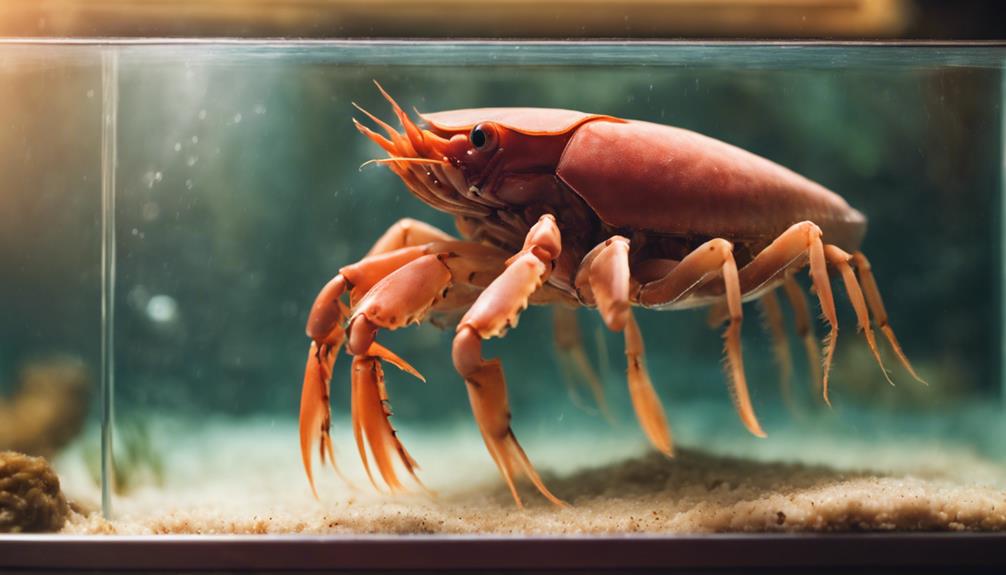
To ensure the well-being of rare crustaceans, it's crucial to understand and avoid common mistakes that can negatively impact their health and quality of life. When caring for rare crustaceans like hermit crabs, one common mistake is neglecting proper shell maintenance. Hermit crabs rely on shells for protection and growth, so providing a variety of suitable shells for them to choose from is essential. Failure to do so can hinder their ability to grow and thrive.
Another mistake to avoid is improper feeding practices. Overfeeding or underfeeding rare crustaceans can disrupt the delicate balance of their ecosystem, leading to health issues. It's crucial to research and understand the specific dietary requirements of hermit crabs to ensure they receive the proper nutrition.
Furthermore, overlooking factors like temperature regulation and water quality can also have detrimental effects on rare crustaceans. Maintaining the correct temperature and water conditions in their habitat is vital for their overall well-being. By being mindful of these common mistakes and taking proactive steps to address them, you can provide the best care for your rare crustacean pets.
Frequently Asked Questions
Why Are Crustaceans Special?
Colorful exoskeletons make crustaceans special. Their vibrant hues serve multiple functions, from camouflage to attracting mates. These intricate shells are essential for protection and are a key feature in the diverse adaptations of these fascinating creatures.
Why Should We Care About Crustaceans?
You should care about crustaceans because they are vital for marine conservation. They impact ecosystems, reflect environmental health, and support biodiversity. Caring for them fosters appreciation for aquatic life complexities, highlighting the importance of their well-being.
Are Crustaceans Good Pets?
Crustaceans make fascinating pets with their unique behaviors and interactions. Tank setup is crucial for their health. Observing their personalities can be rewarding. Ensure proper care and habitat to enjoy the experience.
What Is a Special Adaptation for Crustaceans?
In crustaceans, a special adaptation is their biramous limbs. These evolved structures, unique to this group, assist in functions like feeding, defense, and reproduction. The distinctiveness of these appendages showcases the intricate evolution of crustaceans.
Conclusion
You have successfully learned about the unique features and care requirements of distinctive crustaceans.
Did you know that hermit crabs have been known to live for up to 30 years in captivity when provided with proper care and environment?
By following the guidelines outlined in this article, you can ensure a fulfilling and enriching experience caring for these special pets.
Remember, attention to detail and a nurturing approach will lead to a long and happy life for your exotic crustacean companions.

